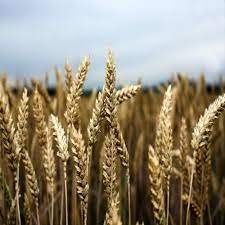Pesticide Residues in Cereals and Pulses
Cereals and pulses form a large proportion of the global diet, and control of pests during storage is a bigger problem with these classes of crop. Storage pests can be controlled by the use of insecticides as residual protectants.
This grain treatment method can be easily adaptable to all types and sizes of storage with minimum expense. This post-harvest application of pesticides leads to the persistence of pesticides in food grains and may cause health hazards.
The short as well as long term impacts of the use of pesticides on biological systems are being evaluated continuously in an effort to minimize the hazards.
A wide spread use of pesticides and their toxic residues have been reported in various environmental matrices by researchers (Singh et al.,2004).
The presence of pesticide residues in rice, wheat and pulses can be a significant route to human exposure and most of organochlorine pesticides have been banned because they are highly persistent insecticides, and their residues still appear as pollutants in food and environment.
Pesticide Residues in Cereals and Pulses
The Food and Agriculture Organization and World Health Organization have recommended residue limits for bioresmethrin, bromophos, Carbaryl, chlorpyrifos-methyl, deltamethrin, dichlorvos, etrimfos, fenitrothion, fenvalerate, malathion, methacrifos, permethrin, phenothrin, irimiphosmethyl and pyrethins used for the protection of grains (Amenzeet al., 2014).
A study in Poland revealed that out of 380 samples of the cereal grains, 34% were found to contain pesticide residues (Neme and Satheesh, 2016).

According to their investigation out of the analyzed cereals, the smallest amount of plant protection products residues was in mixed cereal grains (below 10%) and Avena grains (below 15%) whereas Hordeum and Triticum grains contained the highest content of pesticide residues (over 50%).
A study in Nigeria on organochlorine pesticide residues in cereal grains showed the presence of aldrin, dichloran, dieldrin, endrin, endosulfan, heptachlor epoxide, dichlorodiphenyltrichloroethane lindane, methoxychlor, and mirex.
Another study in Pakistan on pesticide residue of cereals showed that wheat contained the highest concentration of tested pesticides than maizeand rice and maize contained a much higher concentration of pesticides than rice.
The accumulation of pesticide residues depends on the physiochemical properties of the pesticide molecules as well as food (Bajwa, and Sandhu, 2014).
In conclusion, while pesticides help protect our food supply, many people are concerned about pesticides on the food they eat.
Small amounts of pesticide residues may stay in or on our food after it is applied, but pesticides ‘break down’ over time, meaning very little residue is left by the time we eat the food.
Read Also : Roles of Producers and Corporations in Waste Management
The rate of ‘break down’ depends on the type of pesticide used, the application conditions, and the type of food treated. So, the amount and nature of pesticide residue can be different from one pesticide or food type to another.
Government regulatory agencies are responsible for approving pesticide uses and conditions of use, and for setting Maximum Residue Limits (MRLs) for pesticides.
Food safety is a shared priority between growers, industry, statess and federal organizations. While government agencies work to enforce food regulatory laws, food producers help keep food safe by using and improving on good agricultural and pest management practices.
One key practice is to follow pesticide label directions, because they give instructions for the safe and proper use of pesticides.
This helps keep residues within the limits, helping ensure a safe food supply. Government agencies should engage food producers to participate in a variety of on-farm programs to help put in place effective food safety procedures in their day-to-day operations.
Pesticide residues get into cereals and pulses either through pesticide application to control pest on the field or in storage;
The extent of pesticide residues problems in grains depends on the type of pesticide applied, application environment, and the type of crop
Minimum residue limit (MRL) can be achieved in cereals and pulse if the growers abide by standards set by regulatory agencies.



